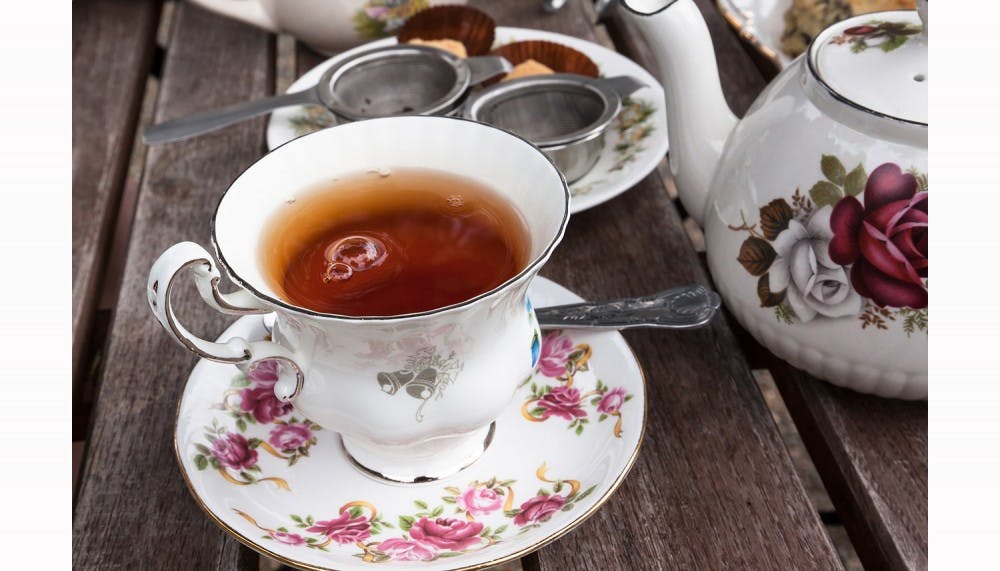Coffee on colleges campuses is obviously huge, but where does tea fit into our lives as students? Some of us may only think of tea as a beverage to douse with lemon and honey when we come down with a cold, others may only get the tea in the form of gossip—but tea is such a beautiful thing. It can be your substitute for coffee, or something you use to unwind. With its seemingly endless list of types, tea drinking is both an adventure and an unwinder.
With over 1,000 types in the world and an endless list of brands and ways to drink, it can be hard to find your favorite tea. However, there are a few basic types of tea that everyone should know the differences between. White tea, the most delicate and light of all teas, gets its subtle and sweet flavors by undergoing very minimal oxidation (the browning process by which teas are exposed to air and gain their unique flavors and aromas). Heavily oxidized teas tend to have darker leaf colors and heavier flavors, like black tea.
Black tea leaves are fully oxidized. They tend to have stronger and more distinct flavors, and they also hold a higher caffeine content than other teas. In the middle ground between middle of black and white tea is oolong tea, made from semi–oxidized leaves. Within oolong teas are even more distinctions—they can be between 10–80 percent oxidized, meaning that flavor and aroma within tea types can also vary. Finally, there is green tea, an almost unoxidized strain, that holds only about 30–40 percent caffeine.
The first step in selecting a type of tea is to figure out what kind of flavor or aroma you would prefer and how much caffeine you want in your tea. If you're looking for something light and decaffeinated, a white, green or light oolong tea would suit you. For bolder, darker and more caffeinated beverages, black and dark oolong teas are the way to go. However, this list is far from exhaustive, as these are just the four basic types of tea. There is also herbal, matcha, chai, pu–erh and hundreds of herbal–floral blends as well.
Philadelphia has a number of great places to both purchase loose leaf tea, or sit down and enjoy a cup. For the best tea experience, we recommend you steep loose leaves—tea bags often contain the dust and ends of broken tea leaves, and because the leaves are so small, tea bags leave you with harsher, more bitter flavors.
Capital Teas in Rittenhouse sells dozens of varieties of loose leaf teas. Their helpful staff, frequent tastings and large selection make this a great place for first time tea buyers. On the other hand, The Random Tea Room & Curiosity Shopin Northern Liberties is a charming tea house. This is the perfect place to enjoy a cup of tea and maybe snap an Instagram photo or two. They also sell loose leaf tea and are the tea supplier for a campus favorite, United By Blue.
Other than United By Blue, Tazo and Teavana teas come in a number of flavors and are sold at multiple places on campus. Although tea bags tend to produce weaker flavors, they can satisfy your tea cravings in a pinch.
Next time things are a bit stressful, or you’re tired of burnt coffee, consider brewing yourself a cup of loose leaf tea. The aromas are relaxing, flavors are interesting and tea can be good for your health—catch the tea on that.

